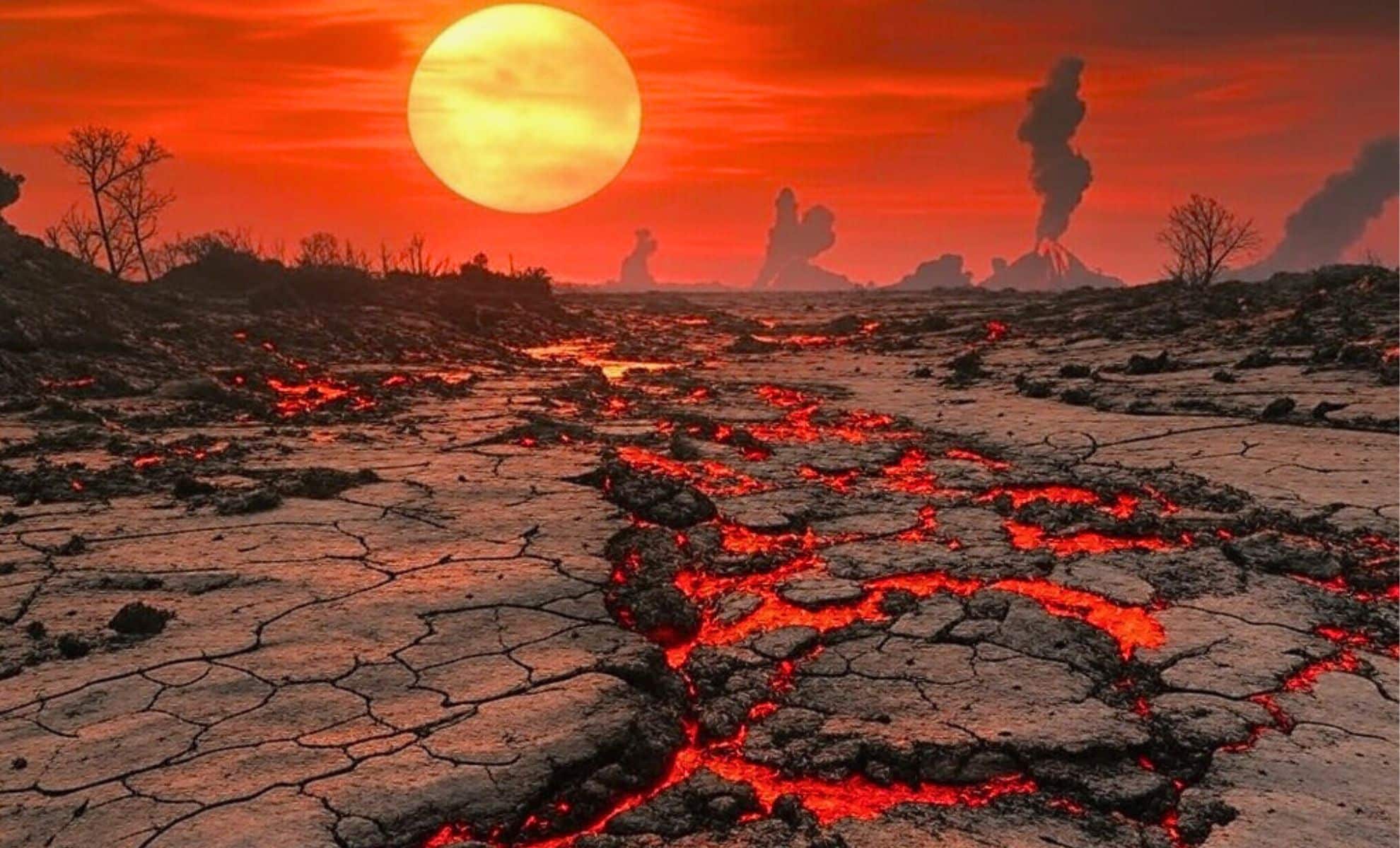
A groundbreaking supercomputer simulation has offered researchers an intriguing perspective on Earth’s far-off future, illustrating a scenario in which a superheated supercontinent could push mammals—humans included—toward extinction.
This study, spearheaded by the University of Bristol, forecasts that in approximately 250 million years, the continents will converge to form a new supercontinent known as Pangaea Ultima. This vast landmass is expected to arise near the equator, subjected to extreme heat, oppressive humidity, and heightened volcanic activity, rendering most areas of the planet inhospitable for mammals.
Impacts of Pangaea Ultima on Earth
As Earth’s tectonic plates continuously shift, they periodically collide and create supercontinents, only to break apart again over millions of years. Scientists assert that this cyclic phenomenon has occurred at least three times before and will re-emerge with the emergence of Pangaea Ultima.
The Threats Posed by Pangaea Ultima
In contrast to earlier supercontinents, which fostered diverse ecosystems, Pangaea Ultima is poised to trigger a profound environmental crisis. The simulations highlight three critical factors that will render survival nearly impossible on this future Earth:
- Heat-trapping supercontinent – Its immense landlocked interior will lead to soaring temperatures. Without vast oceans to moderate the climate, the heat will accumulate, resulting in deadly arid conditions.
- Rising CO₂ emissions – Increased volcanic activity from tectonic movements will release significant amounts of carbon dioxide into the atmosphere, intensifying the greenhouse effect.
- A more radiant Sun – The Sun is predicted to be 2.5% brighter in 250 million years, further raising global temperatures.
Projected Temperature Extremes
The research, published in Nature Geoscience, anticipates that much of Pangaea Ultima could reach temperatures exceeding 40°C (104°F), with certain regions potentially surpassing 50°C (122°F). This combination of heat and humidity will prove fatal for many mammals, including humans.


The Survival Struggles of Mammals
Mammals typically depend on evaporative cooling, such as sweating or panting, to regulate their body temperature. However, within Pangaea Ultima, humidity levels are expected to be so high that sweating would be ineffective, ultimately causing overheating and death for many species.
The study suggests that 92% of the Earth’s terrestrial landscape will become uninhabitable for mammals, with only polar and coastal regions potentially remaining viable.
Dr. Alexander Farnsworth, a climate scientist at the University of Bristol, characterizes this situation as a “triple threat” for mammals:
- Heat events exceeding 50°C (122°F) in many areas
- Unbearable humidity that hampers cooling
- Heightened volcanic activity, releasing harmful gases and further warming the planet
This indicates that, without significant evolutionary changes, mammals could face mass extinction.


Will Humans Adapt?
In the hypothetical event that humans are still around in 250 million years, they will have to devise strategies to endure the staggering heat and humidity. Researchers have outlined several potential adaptations:
- Developing heat-resistant characteristics – Future humans might evolve thicker skin, modified sweat glands, or even new body forms to adapt to the harsh climate.
- Subterranean living – To avoid the extreme surface heat, humans might establish expansive underground cities, sheltered from the worst conditions.
- Nocturnal behavior – In certain imaginative scenarios, humans could become night-dwelling creatures, akin to the Fremen from Frank Herbert’s Dune.
Could Humanity Venture Beyond Earth?
Some researchers propose that long before Pangaea Ultima emerges, humans may have already ventured to colonize other planets or devised means to transform uninhabitable regions of Earth. If that occurs, this supercontinent scenario may become more of a historical point of interest rather than a real threat.
Pangaea Ultima and Historical Extinctions
The creation of supercontinents has been correlated with mass extinction events throughout Earth’s history. Geological upheavals have historically initiated severe climate shifts, resulting in the loss of entire species.
For instance, the end-Triassic extinction (circa 200 million years ago) eradicated nearly 76% of species, following significant volcanic activity and climate fluctuations.
Dr. Hannah Davies, a geologist at the GFZ German Research Centre for Geosciences, posits that while Pangaea Ultima could have disastrous effects, life will adapt over time:
“Extinction events have happened before and will happen again. Life will find a way—but it may not be the life we recognize today.”
The Outlook for Earth’s Climate
While Pangaea Ultima is still 250 million years in the future, the factors that will shape this distant landscape—climate change, greenhouse gas emissions, and tectonic movements—are already unfolding today.
Though humans will not encounter this supercontinent crisis in our lifetime, the findings serve as a stark reminder that Earth’s climate is always in flux, and the planet’s habitability is never guaranteed.
For now, Earth remains our home, but a pressing question lingers in the broader timeline of the planet’s history: Will we still exist when the next supercontinent emerges?
This research was published in Nature.









